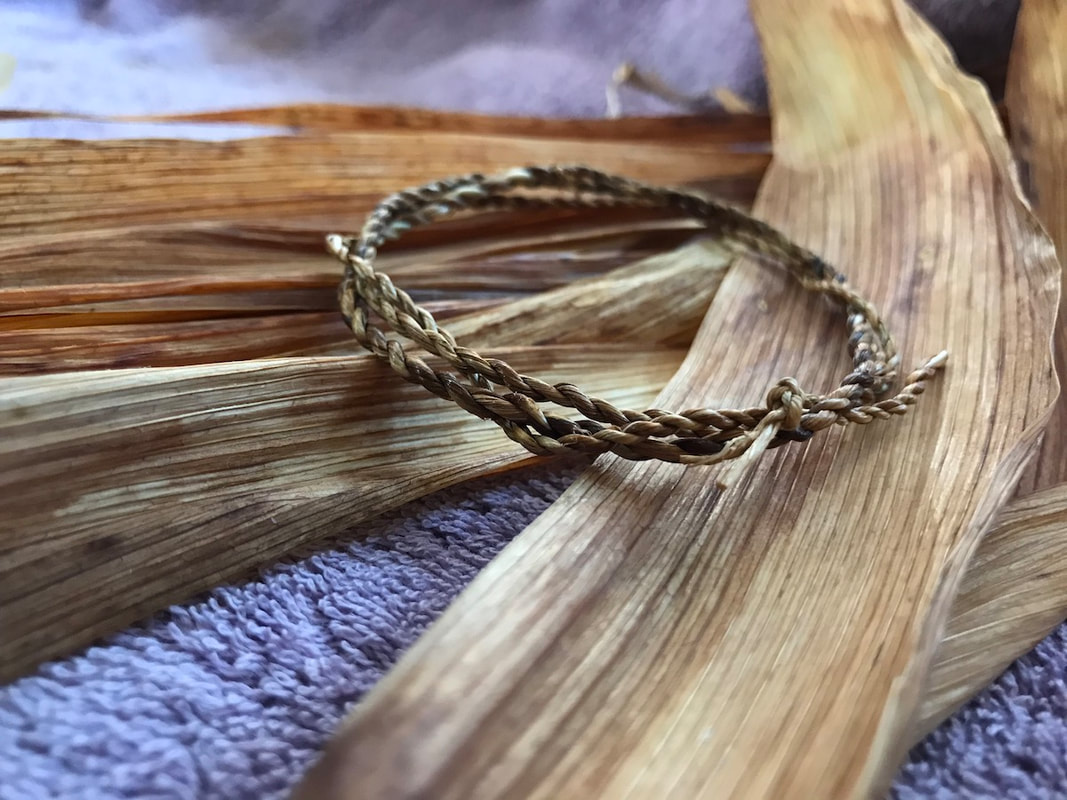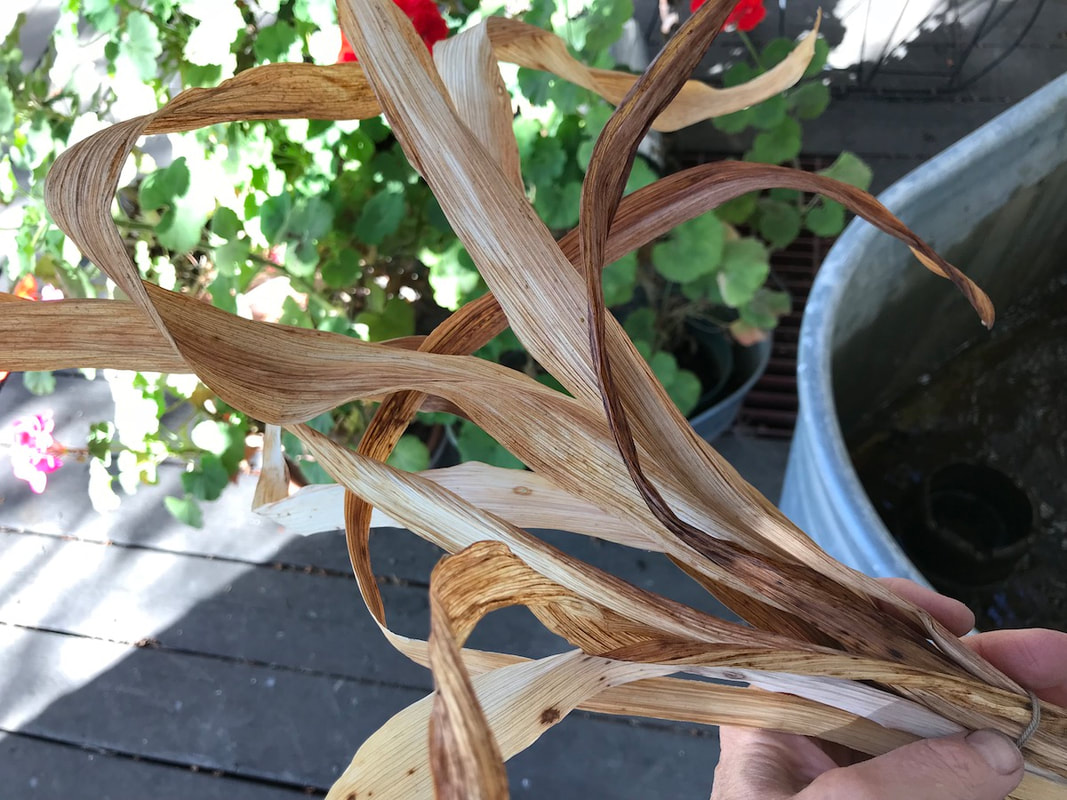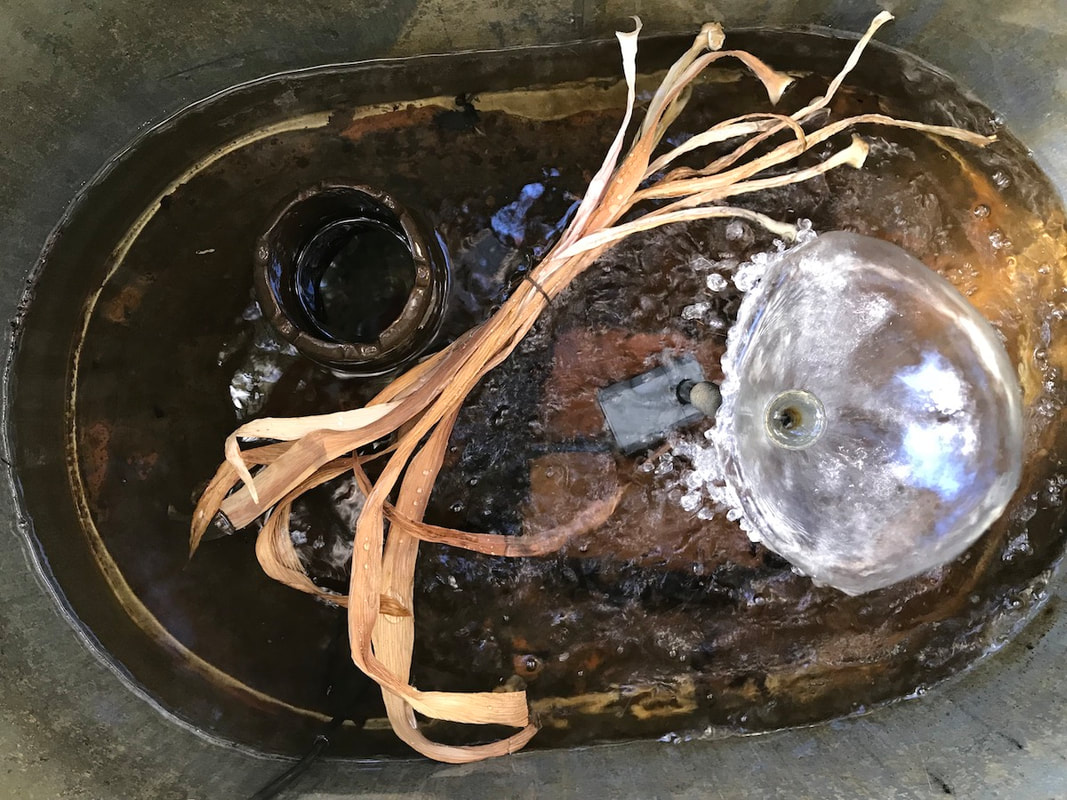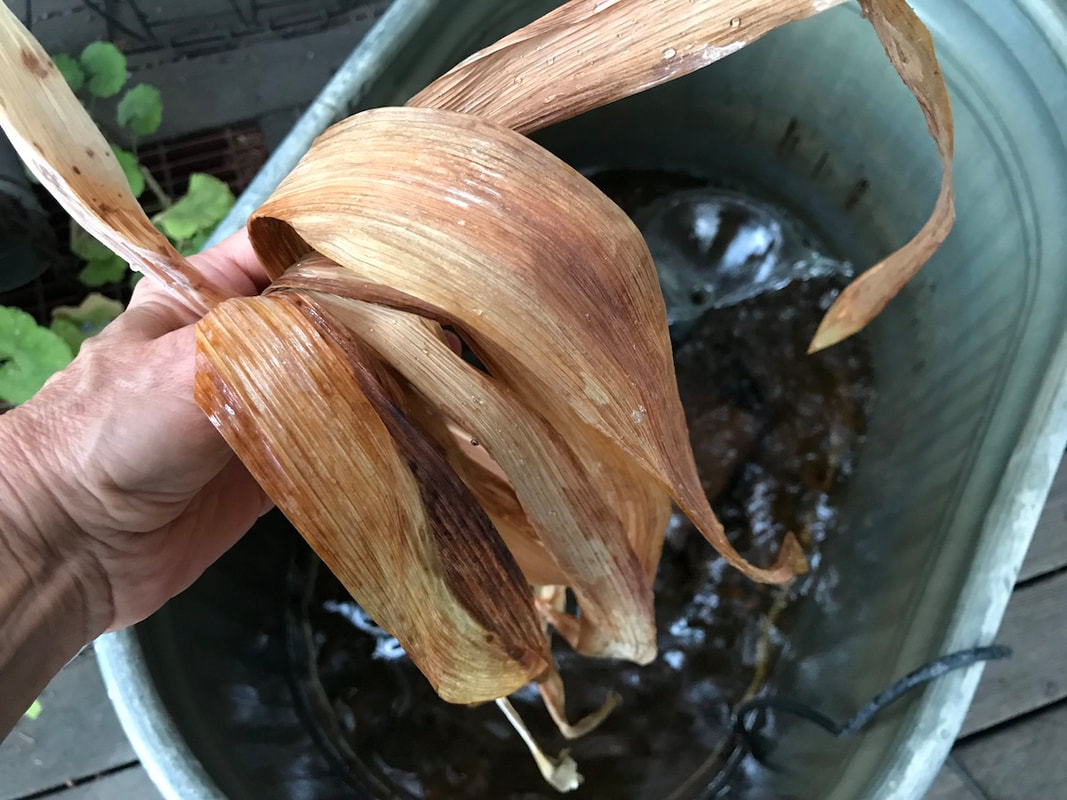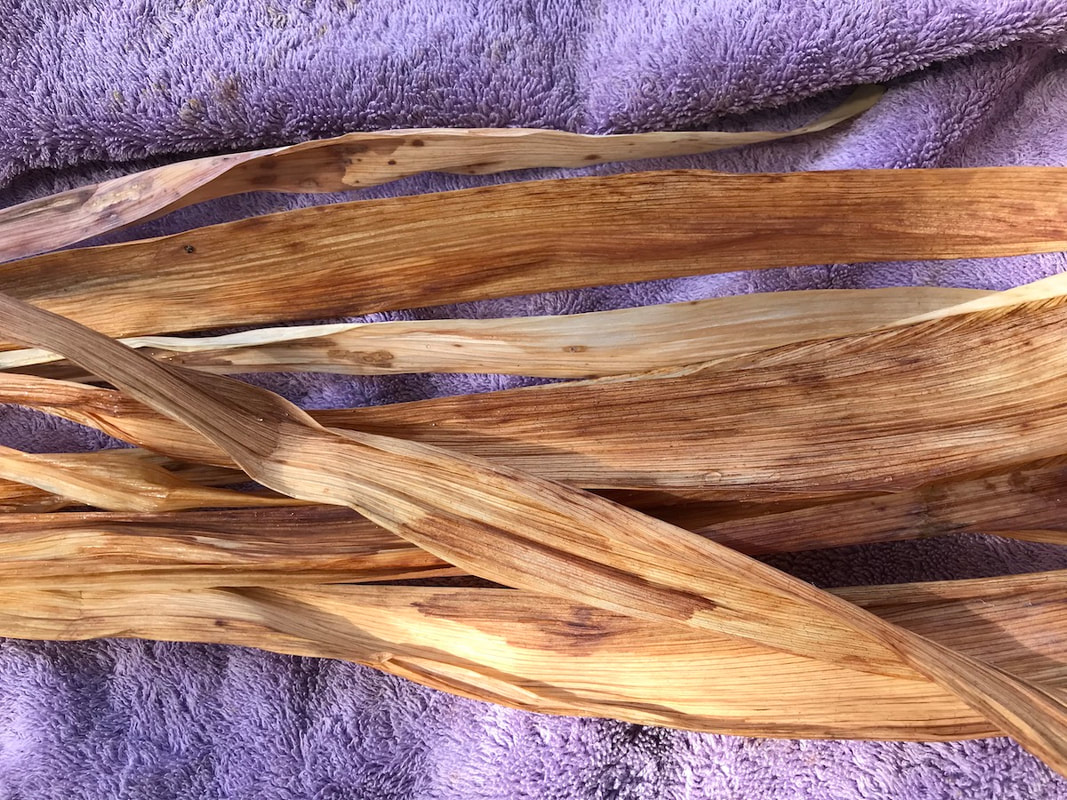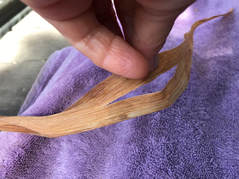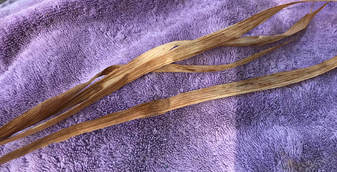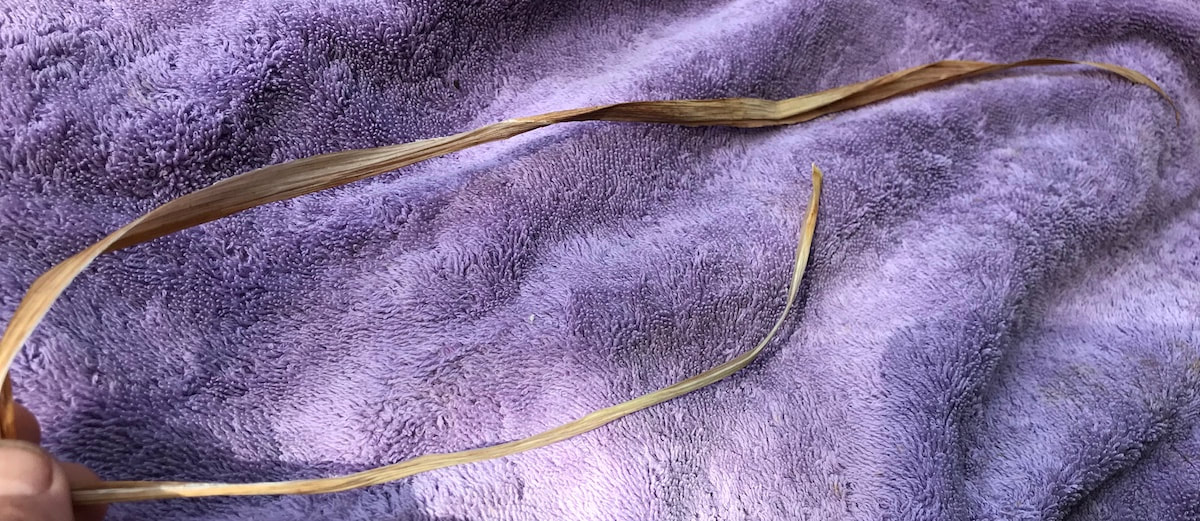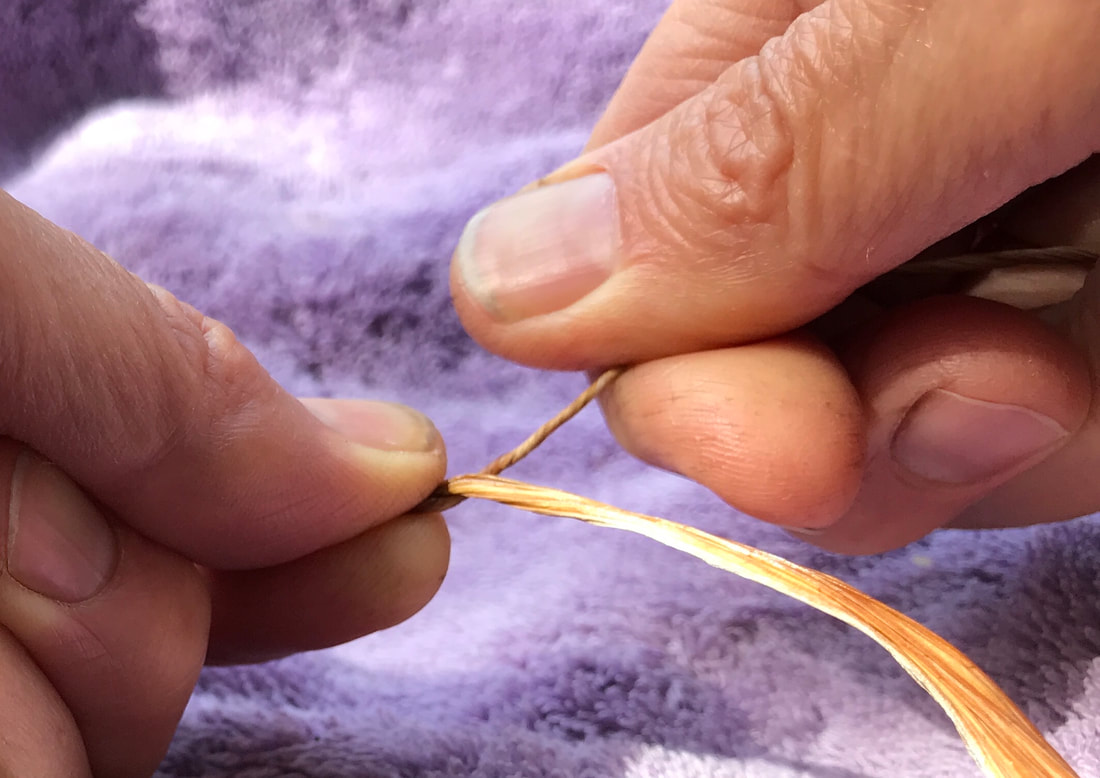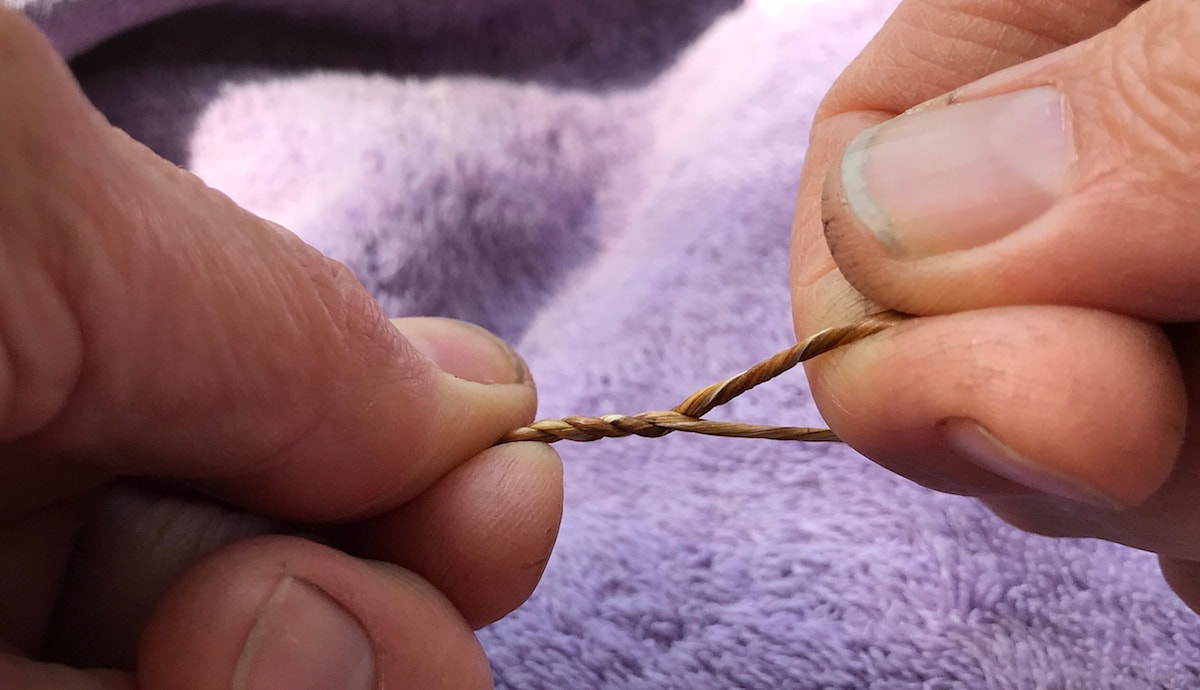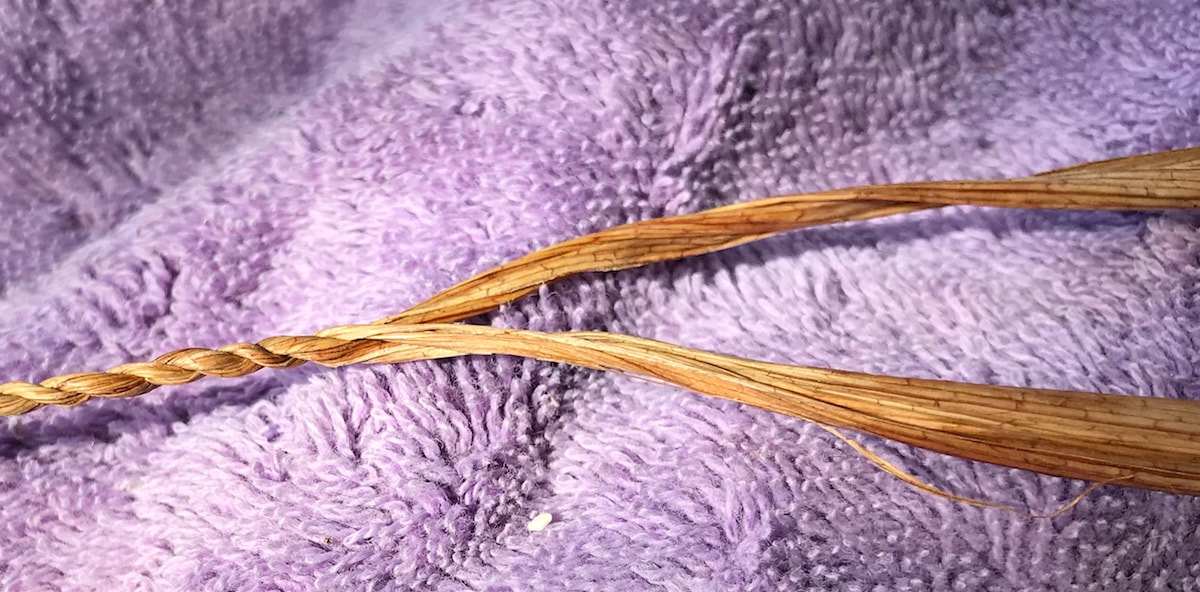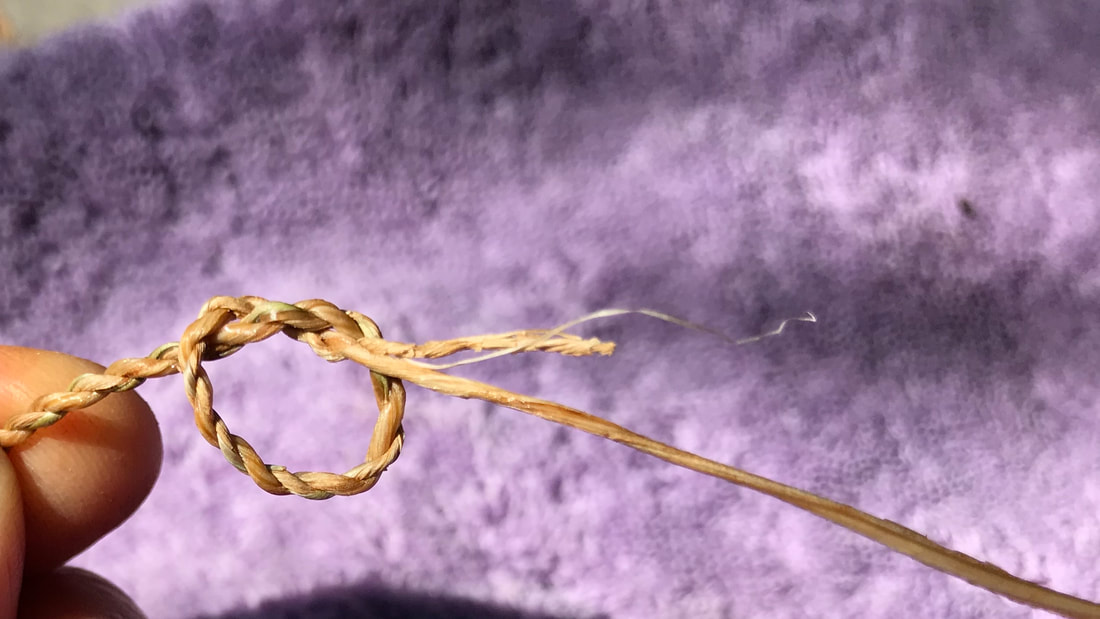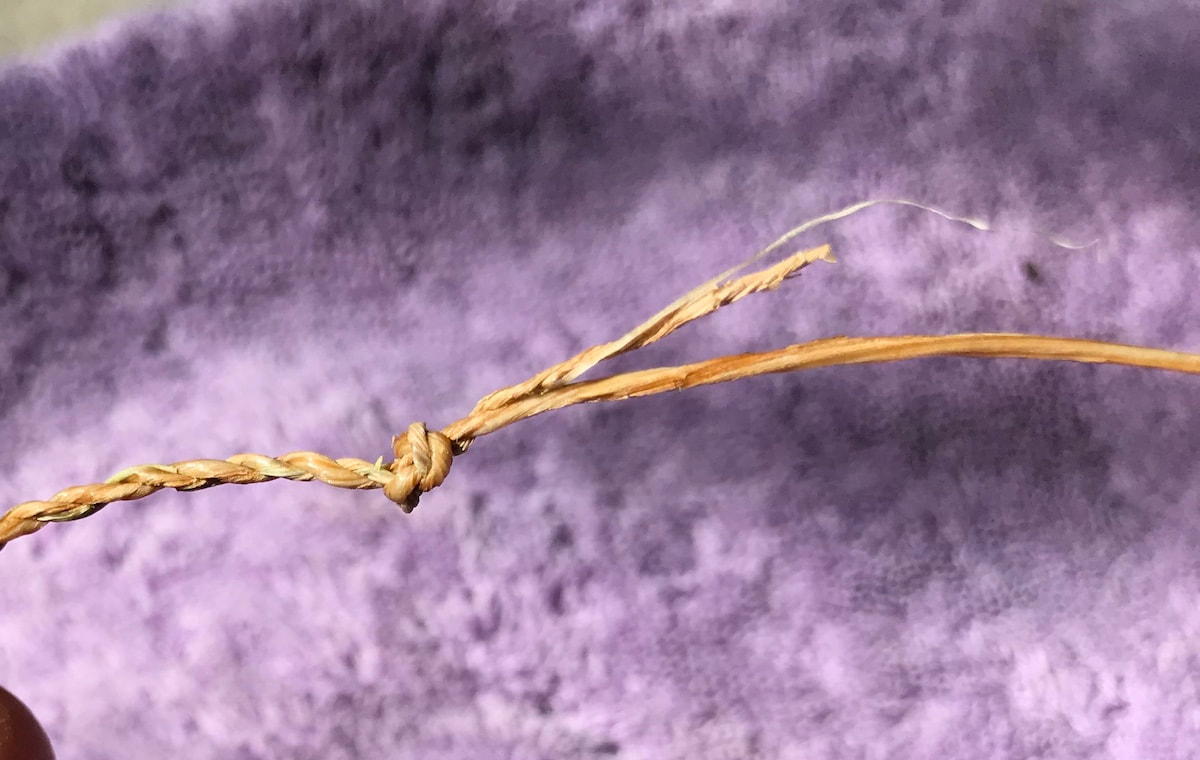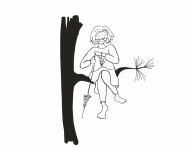about the specifics of making cordage.
and as I said last week,
I'm only just beginning
my research and experiments--
but since you asked,
here a jumping off point for yours.
FYI -- Youtube isn't a bad place for further research.
Thigh spinning videos can be helpful,
and there are also any number of young men
eager to explain how to make cordage--
usually as part of a general survival strategy
for the next time you happen to find yourself in the wilderness
with nothing but a pocket knife
(and the requisite testosterone).
As it turns out, however,
a person only need her hands--
though a pair of snips can be useful.
that it seems absurd
to have 16 photos and a video
to show the process.
But oh well....
No time for brevity.
Gather some leaves**
and get them nice and damp.
You can do this by dumping a bundle in:
-a handy babbling brook impersonator (see photos above),
-your leftover bath water
-an actual babbling brook.
Rolling them in a wet towel also works well,
as does gathering after a rain.
**Iris are satisfyingly strong
Daylily is fun to say (and the leaves can be long)
Narcissus are fragile, narrow and a lovely color
Corn husks are short, plentiful, strong and dye beautifully.
Other plants await...
it has been helpful to wrap the leaves in a damp towel
and let them sit for an hour or three
to even out the moisture content.
to control the evenness of the cordage.
Fold one strip (or leaf) --
but not in half.
the further strand with the other,
and twist it (the further strand) away from your body.
making it (the near strand)
the new far one.
Twist the new far strand.
Cross over.
Repeat.
You are now spinning and plying at the same time.
or they start becoming too thin,
add a new strip
by tucking it into the V
(you can leave a bit sticking out and snip it off later).
Twist the new strip with whichever strip it is joining/replacing.
Here is a Video -- I hope.
Please pardon the bathtub drain sounds --
the brook impersonator by where I was working
is about to be dismantled for winter so is missing its babbilator.
each of which begins and ends in a different place,
determines color, thickness and strength of the finished cordage.
you can make something
fine enough for a fishing net,
or a rope on which you can cross a bottomless chasm.
Not bad for a few dead leaves.
Of course I haven't tried either of these things as yet,
and expect there are a few nuances I'm missing,
but do let me know if you try them
and how they work.
where the bottomless chasms are metaphors
and I am fortunate enough to have a variety of cutting tools,
I usually lop off the sticky outey bits as i go.
when I run out of leaves
or time
or energy
or the cordage is just perfect,
I stop.
